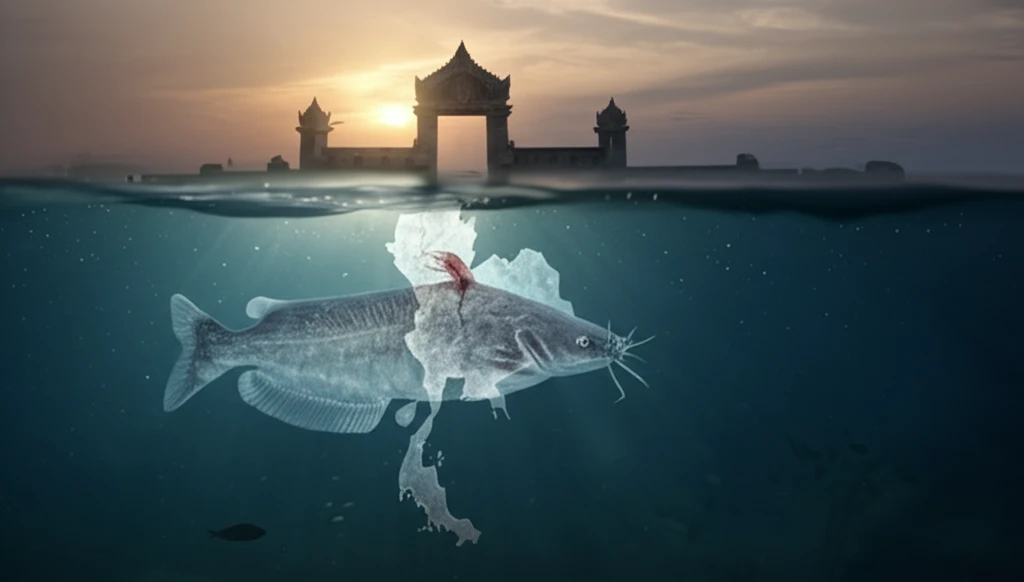
Vanishing Act: Why the Whisker Sheatfish is Disappearing from Thailand's Nong-Han Lake
"A tale of migration, genetic diversity, and conservation challenges in northeastern Thailand."
Nong-Han Lake in northeastern Thailand, a vast and vibrant ecosystem, faces a concerning challenge: the dwindling population of the whisker sheatfish (Micronema bleekeri). This rare freshwater catfish, prized by locals, is disappearing at an alarming rate, prompting scientists and conservationists to investigate the factors behind its decline. Understanding this ecological puzzle is crucial, not only for the sake of the sheatfish but for the health of the entire lake ecosystem.
The whisker sheatfish isn't just another fish; it's a vital part of the region's biodiversity and a significant economic resource for local communities. For generations, these communities have relied on the sheatfish as a source of food and income. However, intensive harvesting to meet market demands, coupled with habitat degradation, has pushed the species to the brink. What makes this situation even more complex is the limited understanding of the sheatfish's genetic makeup, hindering effective conservation efforts.
Recent research has shed light on the genetic diversity and migration patterns of whisker sheatfish populations within Nong-Han Lake, revealing some surprising trends. These findings highlight the urgent need for informed fisheries management and conservation strategies to protect this vulnerable species. The story of the whisker sheatfish serves as a reminder of the delicate balance between human activity and the natural world, urging us to take action before it’s too late.
What's Causing the Whisker Sheatfish to Disappear?

The study of whisker sheatfish populations in Nong-Han Lake revealed alarmingly low genetic variation. Researchers examined 35 sheatfish from the middle of the lake (MN) and 34 from the lower region (LN), analyzing seven microsatellite loci—specific DNA sequences used to assess genetic diversity. The results indicated that both the MN and LN populations had limited genetic variation, raising concerns about their ability to adapt to environmental changes and resist diseases.
- Overfishing: The high demand for whisker sheatfish in local markets has led to intense harvesting, leaving fewer fish to reproduce and maintain the population.
- Habitat Degradation: Changes in water quality, loss of natural habitats like floodplains, and alterations to the lake's ecosystem have made it difficult for the sheatfish to thrive.
- Water Management: The operation of the Nam Kum Gate, which regulates water levels in Nong-Han Lake, has disrupted natural water cycles, affecting fish migration and spawning patterns.
What Can Be Done to Save the Whisker Sheatfish?
The future of the whisker sheatfish in Nong-Han Lake hangs in the balance. However, with informed strategies and community involvement, there is still hope for this unique species. A multi-faceted approach that addresses overfishing, habitat degradation, and water management issues is essential to ensure its survival. By working together, local communities, researchers, and policymakers can create a sustainable future for the whisker sheatfish and the vibrant ecosystem of Nong-Han Lake.
